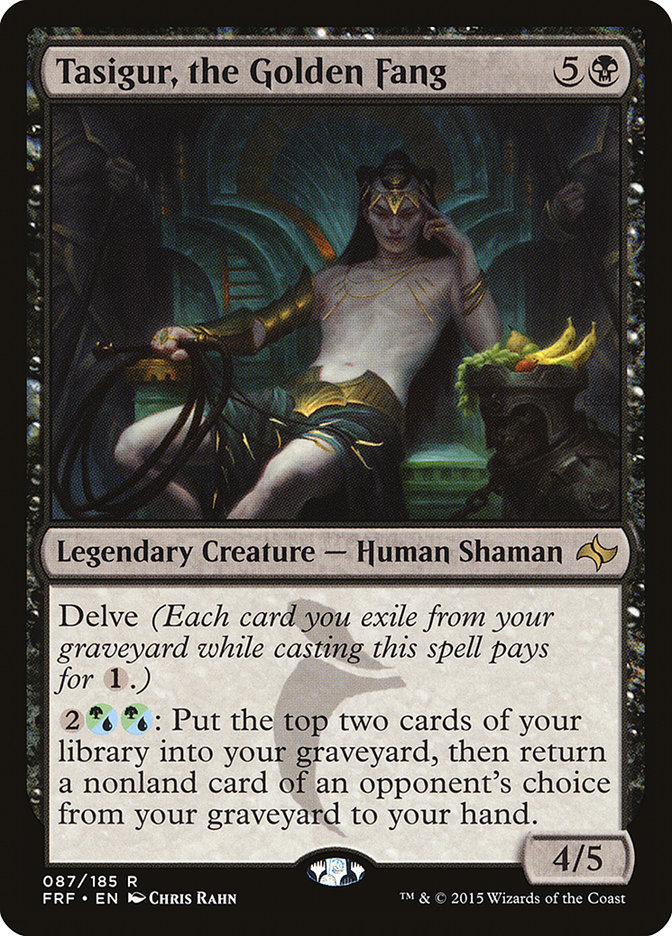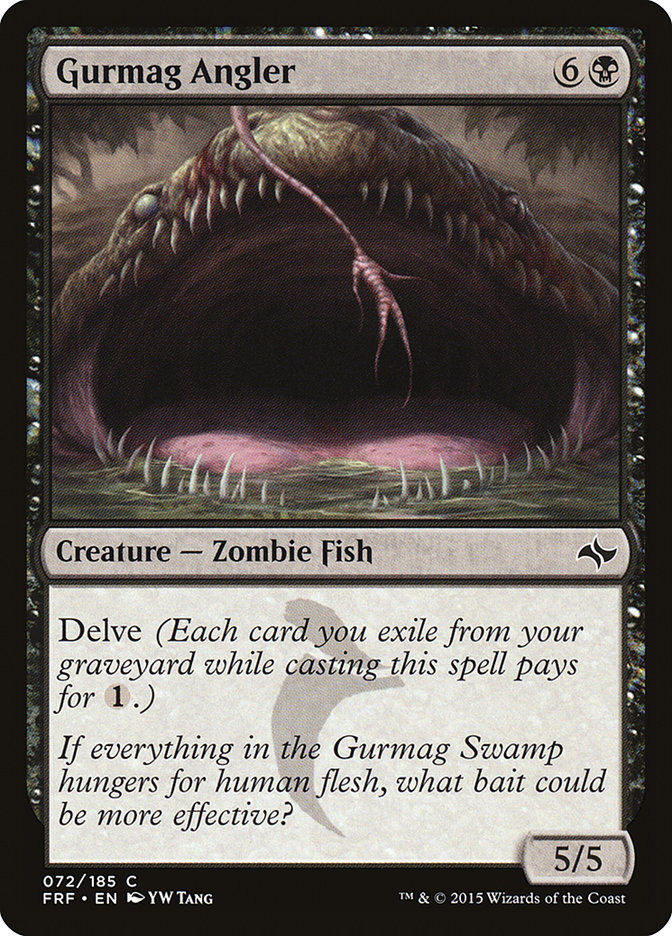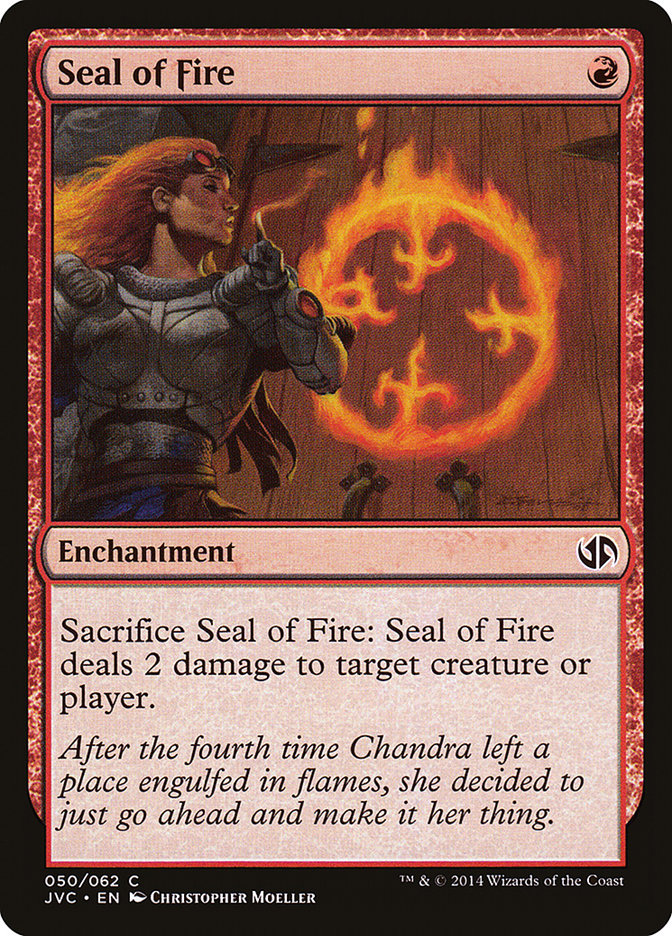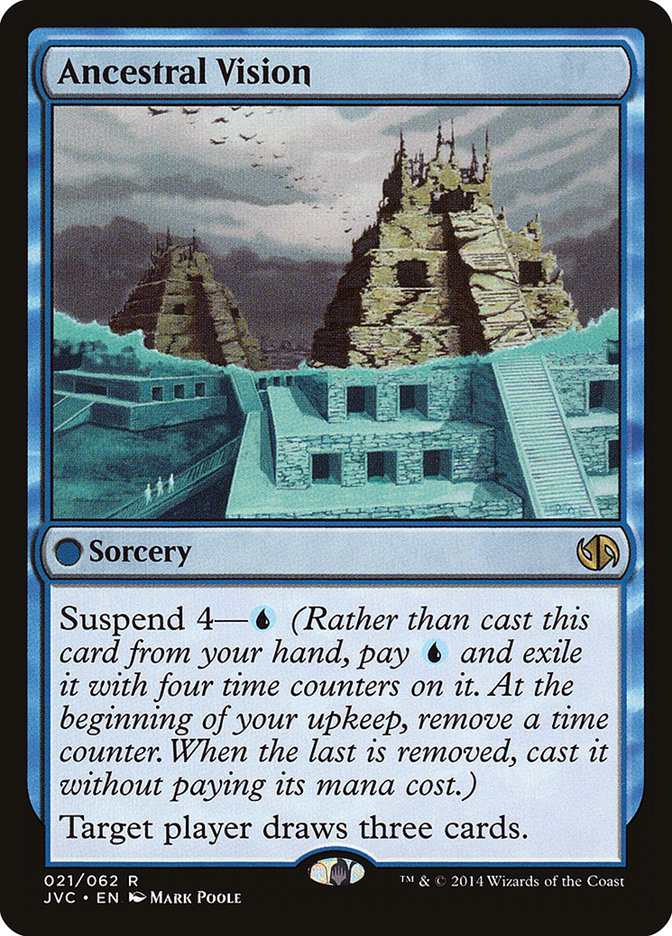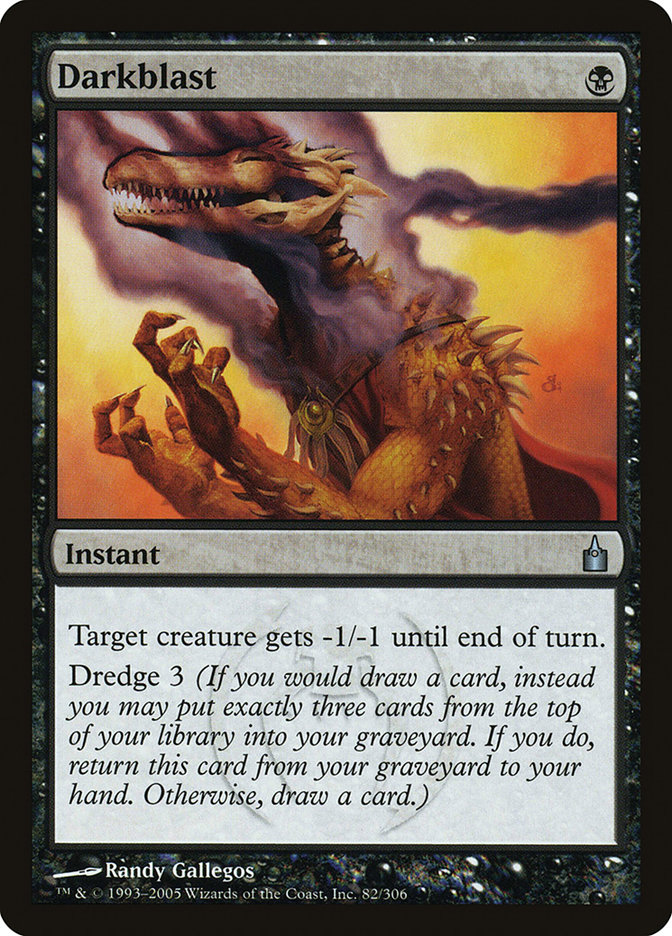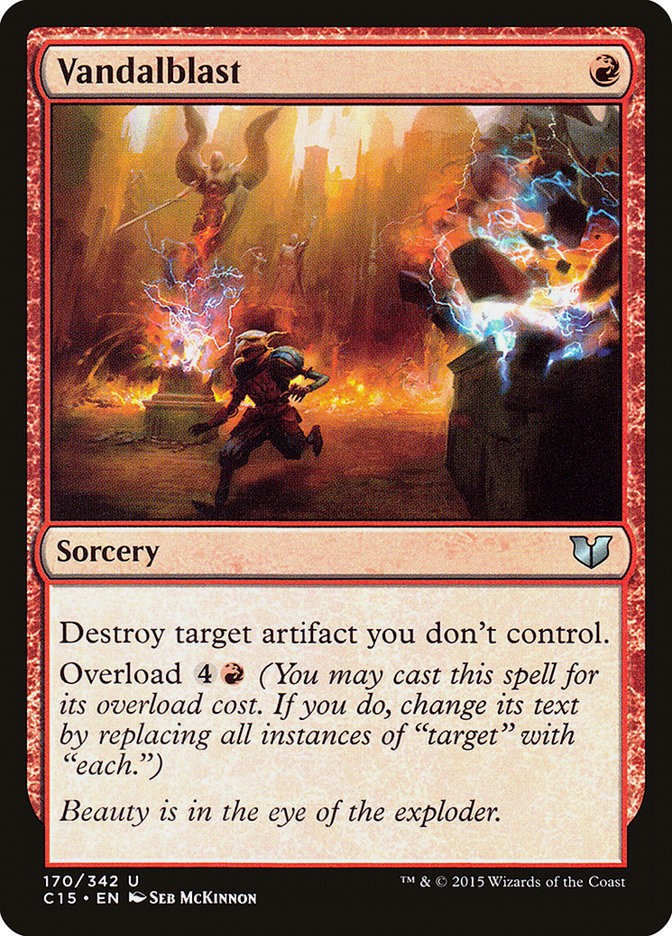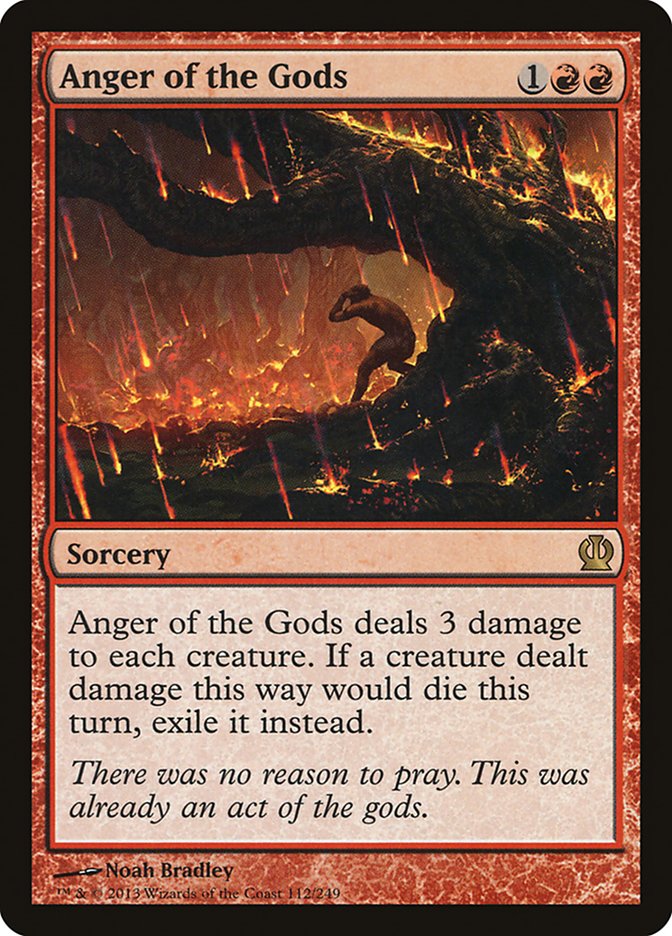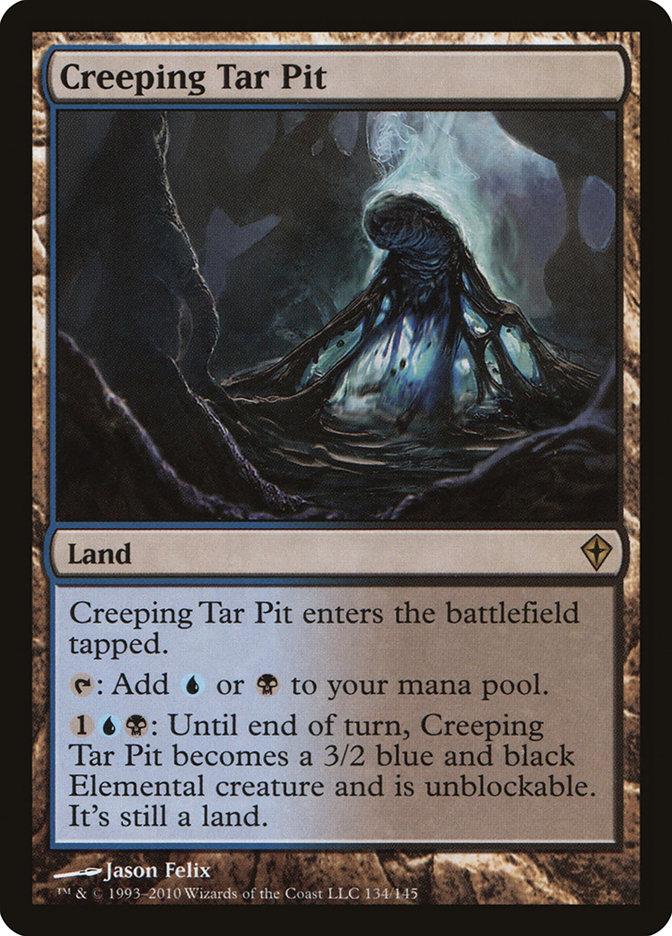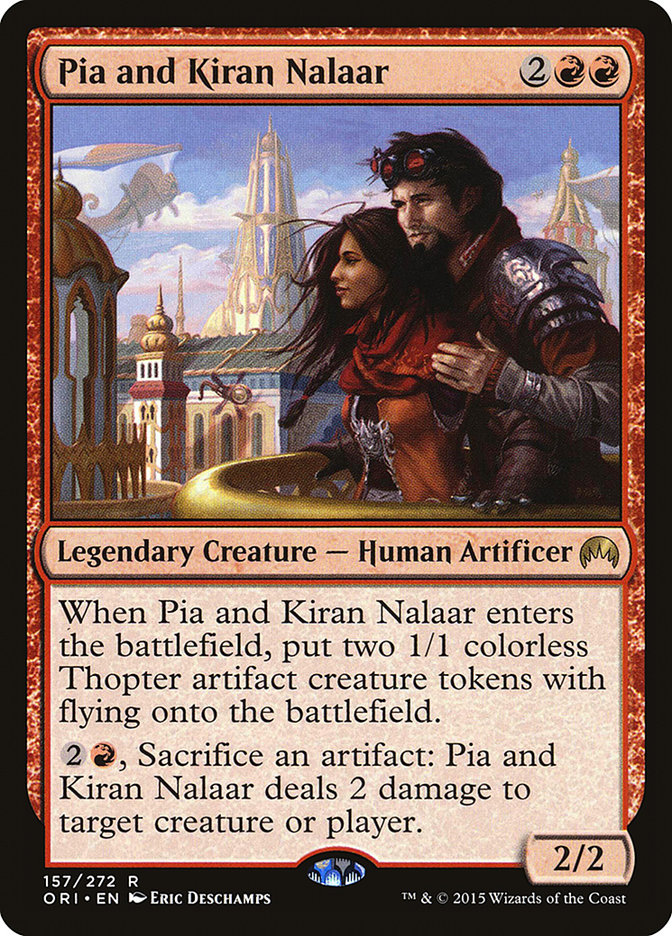It’s been a little while, but I finally tricked myself into play Grixis Control again.
The good news? Well, my tie-breakers held up – which earned me a not-too-shabby 16th place after starting day 2 with a 6-3 record at #SCGMKE.
I also now have an excuse to write about the archetype – one that I love dearly, and, presumably based on feedback, one many of you do too.
The bad news?
Grixis still has a ton of problems.
Before we get into that though, here’s the list I played this past weekend:
Creatures (9)
Lands (24)
Spells (27)

I basically had full reign of Gerry Thompson’s Modern box with his decision to build G/R Eldrazi and spent the majority of our plane ride writing up notes and decklists on my phone. When we landed and Gerry took a look, he basically scrapped all of my hard work with the notion that I should just play Kalitas.
His advocacy of the Traitor of Ghet made a lot of sense, so I did.
This movement towards Kalitas accomplishes a few key things:
The Grixis win condition now puts its player out of reach. Burn used to be a huge issue in the past as you were forced to effectively race it with a large creature like Tasigur, the Golden Fang or Gurmag Angler. Kalitas simply requires that you buy enough time to connect once or twice. Once you do, the game is essentially over as each hit blanks one of their draw steps.
This is also a huge boon in basically any creature matchup where we are forced to go low early on and can then start to race back and turn the corner.
Further, against these creature decks, Kalitas, Traitor of Ghet snowballs your position rapidly while oftentimes incidentally shutting down many of your opponents’ interactions. Against Abzan Company in particular, Kalitas is an absolute monster, blanking their infinite combo and making many of their value creatures like Kitchen Finks and Voice of Resurgence anemic.
I was generally pleased with the inclusion of cards like Seal of Fire and Slaughter Pact as means to enable Kalitas. Playing the Vampire on turn 4 with the ability to generate a Zombie was incredibly powerful every time I had the option. The only qualm I have here is that a Terminate was lost in the shuffle to include these additional removal spells.
Don’t do this. Play the third Terminate.
I was incidentally quite weak to opposing black creatures like Siege Rhino, Death’s Shadow, and opposing Kalitas, Traitor of Ghet because of my movement towards Slaughter Pact, and it likely cost me a match.
It’s also worth discussing how fundamentally differently this Grixis Control deck is constructed in comparison to the Jace, Vryn’s Prodigy-based builds I have played and written about in the past. This doesn’t really mean that I think Jace is bad now or anything along those lines; I was just taking my deck in a different direction. I will include a list incorporating Jace later on.
The decision to play Ancestral Vision and eschew Jace, Vryn’s Prodigy also had some strong implications on the structure of my deck. Previously I was interested in an overload of discard effects, since they play so well with the sorcery-speed Jace, Telepath Unbound. With Ancestral Vision and Kalitas, I was more interested in sitting back and waiting for my suspend spell to tick down.
This movement toward something resembling a “pure control” deck means that countermagic gets significantly better. In particular I thought that there would be a strong uptick in blue strategies and wanted Spell Snare as a means to fight Snapcaster Mage wars. I never actually played against a control deck in the tournament, but the Spell Snares still performed admirably in conjunction with Mana Leak as a clean solution to many problems.
I had been impressed with a few copies of Mana Leak every time I played it in the past, and quickly decided that I wanted to make it a more central part of my deck without any copies of Jace. I would still do this if I were to use my deck as a starting point in the future.
Okay, I guess we’ve finally gotten back to that bad news.
My Sideboard
I got to spend a lot of time (seriously – many, many hours) thinking on the trip home how poorly it was constructed.
Many of the slots are simply leftovers from our older Grixis lists and that’s okay. Izzet Staticaster, Dispel, Negate, and Thoughtseize are cards that I’m more than happy to include and probably will continue to do so.
I already touched upon Slaughter Pact, but I’ll hammer home the point that it shouldn’t be here. The fact that I was devoting a spot removal slot in my sideboard but couldn’t actually bring it in against the two midrange decks I played against where the effect should be welcomed is just sad.
Darkblast is another leftover from the days where the deck was more graveyard-focused. Further, the inclusion of Seal of Fire already gives the deck a critical mass of cheap interaction, and I’m already committed to playing Izzet Staticaster. This was a wasted slot.
Vandalblast is the most embarrassing. This is blatantly a relic from playing with Jace, Vryn’s Prodigy where it was super-effective to incidentally get this in the graveyard with a Thought Scour or a similar effect before combining Overload with Jace’s -3 ability. Frankly, if I had just done my homework, I should have realized that Affinity was expected to be in low numbers, and that matchup is fine already.
As it were, I burned four or five slots in my sideboard that could have been covering just about any of the spectrums of Magic. I played against Tron (which my deck can never beat as configured, but I’ll once again get to that shortly), Living End, and two other combo decks where additional land destruction, graveyard hate, or simply more counterspells would have done wonders.
This is the downside of building a deck that isn’t proactive in Modern: choosing how to divvy up your sideboard slots appropriately for a perceived metagame week-to-week is incredibly difficult.
The only thing that pleasantly surprised me was that copy of Goblin Dark-Dwellers, which I drew exactly once but was everything I dreamed it could be, taking me from an unfavorable position against Jund to way out in front. This is exactly the powerful midrange breaker that I’ve always wanted.
Before I exit my sideboard specifics, I do want to briefly mention a bit of an aside, if only for my own peace of mind.
The interaction between Anger of the Gods and Kalitas, Traitor of Ghet is rather strange, and I asked two judges over the course of the tournament how to handle it –despite the interaction never coming up in a game. Basically, if your creatures are going to exile from Anger of the Gods with a Kalitas on the battlefield, you have the option of choosing which replacement effect will exile your creatures. This is a very obscure rule that doesn’t come up very often, and I wasn’t sure of an ethical way of handling this should it ever arise.
One judge essentially told me that I should ask my opponent which replacement effect they would like to choose – which, while certainly less awkward in the sense of potentially putting my opponent in a feel-bad situation, is also not exactly intuitive. I don’t really know how I would have handled it; I suppose by just waiting to see if my opponent prompted me about my Zombies? Anyway, here’s your PSA!
Big-Picture Problems
Pivoting towards Kalitas does not come without significant costs.
As good as the Traitor of Ghet is at dominating creature matchups, he is about as bad as it comes when your opponent isn’t interested in traditional interaction on the battlefield.
When you’re forced to try to clock someone with a vanilla 3/4 for four mana, the old problems Grixis had of “no closing speed” come out in full force in the worst possible way. Playing against Tron this past weekend felt like the most unwinnable match I’ve played in six months.
This continues to be a massive issue with Grixis Control in general – there’s almost no way to configure your deck to have a variety of even and positive matchups against a plethora of strategies.
You aren’t going to get any free wins, the games are going to be hard, and the majority of the time you’ll be forced to give up playing as the control deck to start sneaking in points with Creeping Tar Pit and deploying “Ambush Viper” Snapcaster Mages to pressure opponents.
Another issue with Kalitas is that, despite it being at a generally high power level in various G/B/x “midrange mirrors,” it, and your deck in general, are extremely susceptible to Liliana of the Veil. Despite Pia and Kiran Nalaar not being as dominant a threat as Kalitas is when he’s online, Mom and Dad are excellent at gumming up the battlefield and insulating you from both Liliana and Lingering Souls, the latter of which was another card that I died to while feeling helpless.
That being said, they don’t do a whole lot for solving issues against combo or big mana decks and they don’t take over the game nearly as effectively as Kalitas against creature and hyper-aggressive decks.
It’s tough.
The fact of the matter is that there is no perfect solution. If I wanted to approach Grixis Control from a similar angle as I did this past weekend, however, I would start here:
Creatures (9)
Planeswalkers (2)
Lands (24)
Spells (25)

It’s a little unclear whether the use of Liliana of the Veil here is ill-advised. I don’t think combining it with a higher curve is too much of an issue due to our land count and ability to rebuy our threats with Kolaghan’s Command, but I could certainly see it being awkward without Jace.
I really just want something to put the bigger strategies into a pinch more quickly, and Liliana of the Veil is certainly a nice combo with Kalitas.
It’s unfortunate that I got Spell Snare quickly out of the deck again, but despite it performing fairly well, the blue instant is not a potent combination with the powerful black planeswalker.
I promised a decklist with Jace.
Creatures (12)
- 3 Snapcaster Mage
- 1 Gurmag Angler
- 2 Tasigur, the Golden Fang
- 4 Jace, Vryn's Prodigy
- 2 Goblin Dark-Dwellers
Lands (23)
Spells (25)
- 4 Lightning Bolt
- 4 Serum Visions
- 3 Terminate
- 2 Ancestral Vision
- 2 Thoughtseize
- 3 Inquisition of Kozilek
- 3 Thought Scour
- 1 Murderous Cut
- 3 Kolaghan's Command
Sideboard

This take is about as brute-force as we can possibly be, relying heavily on individual card quality. There’s certainly a reasonable risk of playing a little too much “air” between copies of Thought Scour, Serum Visions, Ancestral Vision, and various discard spells. That being said, the cheap delve threats and the ability for Goblin Dark-Dwellers to play catch-up should help immensely in that regard.
We are very much a “blue Jund” deck here. Notably, I stole a little piece of tech from Chapin with a Boom // Bust in the sideboard as well as some copies of Molten Rain to team up with the Goblin Dark-Dwellers to keep Tron and Eldrazi off-balance.
The last thing I want to include is a more off-the-beaten-path idea I had. Originally I was interested in brewing with Thing in the Ice for Grixis, but the more I’ve thought about it since, I don’t think Grixis is capable of operating with a card that can prove to be such a poor draw later. Despite that, I want to explore some tempo shells that can exploit the horror:
Creatures (13)
Lands (23)
Spells (24)
- 4 Lightning Bolt
- 2 Mana Leak
- 4 Serum Visions
- 3 Remand
- 2 Electrolyze
- 2 Spell Snare
- 1 Cryptic Command
- 1 Burst Lightning
- 1 Dispel
- 4 Gitaxian Probe
Sideboard

I’ve always been a huge fan of Spellstutter Sprite, even without Bitterblossom, and in particular it can do some pretty nasty things for protecting Thing in the Ice – including being rebought alongside all of your other enters-the-battlefield creatures. This is really more of a rough sketch, but I love the idea of playing a deck that is capable of keeping its opponents off-balance long enough to kill them instead of being forced to play a half-hearted control deck the majority of your games. In particular there are a ton of different directions you can take the sideboard, including sideboarding into more of a “Blue Moon” shell, or overloading on grindy elements like Goblin-Dark Dwellers and Ancestral Vision.
I’ll be taking a small break from Modern to prepare for #GPNYC, but soon enough I’ll be back for the SCG Tour® stop in Indy the following week. While I’m unlikely to sleeve up Grixis Control again for a little while, it was still a fun tournament. Maybe I’ll be able to figure it out someday.



